Ancient Rome was both a class-conscious state as well as strictly hierarchical. However, this did not rule out the opportunity for people to move between ancient Roman social classes. Before the 2nd century BC, class was not the only way that a Roman’s birth placed him or her in society.
There were three social classes into which people would be placed in ancient Rome: Patricians, Plebeians, and at the lowest or bottom rung – slaves. There were also certain codes of dress and religious offices with their rituals that were normally associated with the Patricians.
Wealth was also a very important factor, and in itself it created a huge difference for those with money, who could be found among the equestrian and the senatorial ranks. While it may have been possible for the less well-off to work their way upwards, this would have been extremely difficult and would require them to somehow become wealthy by themselves.
The Upper Class of Ancient Rome – Inheritance and Power
Senators in ancient Rome were the basis for the creation of the political class, which would apply to those males who had served in the Senate, and this could also extend to their families. At the top of this class were the nobles, who held a dominant position – this would also apply to any family member who had an ancestor that held the office of Consul or sometimes in the magistracy.
If a man became the first in his house to be elected to Consul this would also qualify his family members to belong to the same social class. Cicero was at one time a Consul and we are told that a Senator had to be wealthy with property. Salaries were not paid; Senators wore tunics with broad stripes running down them, known as a Laticlavi.
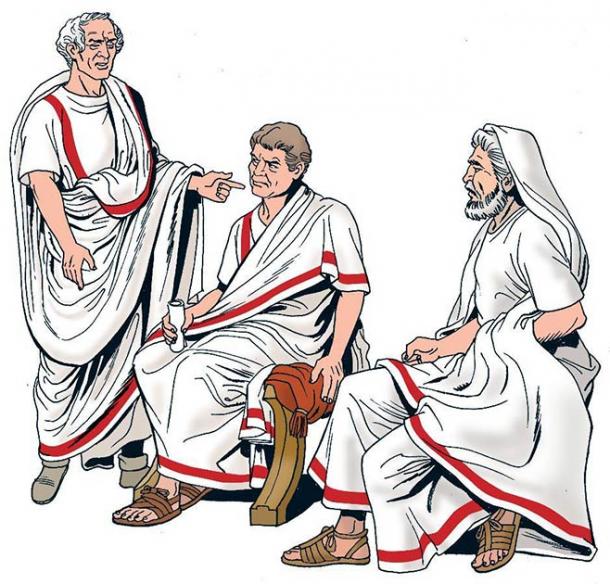
Roman senators. ( Massimo Todaro /Adobe Stock)
The equestrians (equites) were the next group in the Roman upper classes. Unlike the Senators, this group was based upon economic wealth. To be placed in this ancient Roman social class, the man had to be able to show he had a certain amount of wealth, that he was stable in his business, and that he had property. His family was also given the status of the equestrian.
If, during a man’s time, he was to be elected to the magistracy, which in turn would allow him entry into the Senate, it was possible that his status would also change. However, being an equestrian meant that his duties would be mainly business related. Equestrians wore a similar tunic to the Senators, but with a narrow stripe running down them, “Augusti clavi”.
Where were Women in the Ancient Roman Social Classes?
Ancient Roman ladies were also classified as belonging to the same class as the Senators or the equestrians and usually belonged to the same families that had held positions of dominance over many generations. These class distinctions were based on, or defined by, what position the male head of the household held, rather than a woman’s social class at birth.
It was never clear exactly to which class the ladies of Roman society belonged. So, over time it became customary that the women of the households belonged to the same class as either their father or husband. Unlike the men, the women of ancient Rome had no distinctive dress to show their social status.
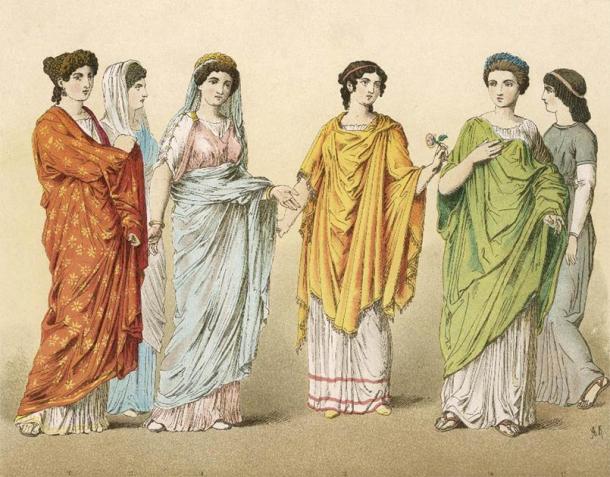
Women had different treatment when they were assigned to the ancient Roman classes. ( Archivist / Adobe)
Change came about for married women, daughters, granddaughters, and great granddaughters who came from the senatorial group during Roman Emperor Augustus’ rule. He prohibited any member from a senatorial class from arranging any legal marriages with the class known as freed people.
So, we can see that the people who belonged to one of those two upper classes in ancient Rome were given many roles of significance, which also came with much prestige. This can be clearly seen when we observe that belonging to those privileged classes also bestowed them with both political as well as economic status, and this included legal rights.
Moving Up the Societal Ladder
We must remember that, unlike today, ancient Roman society had no middle class. This meant that there was a vast difference between the two upper classes of the Senators and the equestrians, which created an immense gulf in class distinction.
If, however, one was a freeborn person with Roman citizenship, there may be at times a very slight opportunity of being able to move up into the class of the equestrian, if one could gain enough wealth. On the other hand, entry into the senatorial class was almost impossible and even difficult for those of equestrian class. From this we can see that a very small number of people in the senatorial class could exercise their privileges for centuries while being relatively small in number.
Common People in Roman Society
The Lower Classes, or common people, would wear togas as freeborn citizens. They also held the right to make contracts, which gave them the right to marry , but only another Roman citizen. The marriage could produce children who would be recognized as Roman citizens also.
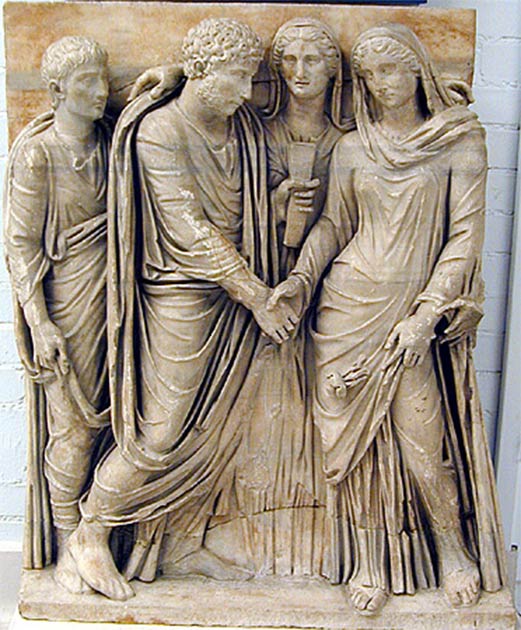
An ancient Roman marriage ceremony. ( CC BY SA 4.0 )
This ancient Roman social class included the Latin’s – who would have been freeborn and resided in the Italian Peninsula. Then, around 90 BC, they gained a form of full citizenship. But if they had been prior slaves that were not freed properly by a Roman citizen, then they were placed in another class known as the Junian Latin’s.
Then came the freed people who had been given their liberty. These were both males and females who had previously been slaves but had saved enough money to buy their freedom. But even then, in the Roman state they may have had various restrictions put upon them and still owed their former owners certain duties, so in a sense they were not fully free people.
It was these former employers who now became their patrons. Although given their freedom, free people were still not permitted, or even eligible, to apply for any public office. They were trapped into a state system of law from which they could not escape. They were generally not well paid even when some obtained the skills for a trade. They continued to be known as members of a lower class in Roman society.
Roman Slavery
Slaves provided the fuel that kept the power of Rome moving. This was a system where one could buy a human being who may have been captured in war or taken by pirates and sold into this way of chattel slavery. Once bought, they became the property of their owner by Roman law . Domestic slaves were especially common in urban areas.
It was possible for some slaves to start saving so that at some point in the future they could seek their freedom and the masters of the household could grant them manumit (release from slavery). This could lead to a few slaves having the opportunity of moving up in the Roman social class system.
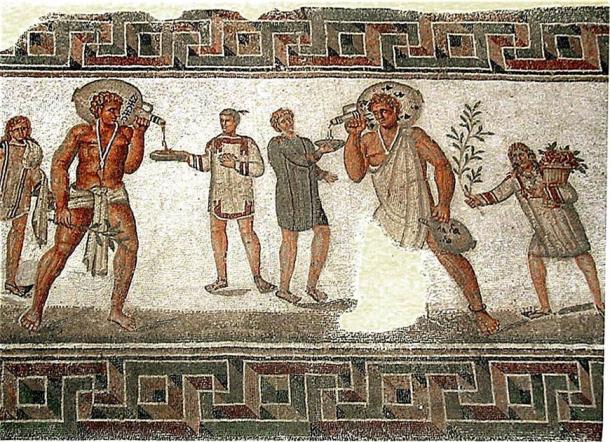
Roman mosaic from Dougga, Tunisia (2nd century AD): the two slaves carrying wine jars wear typical slave clothing and an amulet against the evil eye on a necklace; the slave boy to the left carries water and towels, and the one on the right a bough and a basket of flowers. (Pascal Radigue/ CC BY 3.0 )
Being a slave in ancient Rome was not based on racial standing in any way – it was more a case of being captured or stolen and ending up in the slave markets. Slaves had no particular dress to identify them in society.
Sometimes a slave would try to escape and run away, at times they were lucky and accomplished this, but if they were caught then their owner could force them to wear a collar which had inscriptions upon it offering rewards to the person who caught them.
Changes to Social Classes in the Roman Empire
Ancient Roman social classes saw some changes during the period of the Roman Empire . The Junian Latin’s almost vanished, which led to the emergence of a new class in the Roman world – the Emperors and their families.
We can observe this from the time of Augustus when the imperial household became linked with the state. This was also a vast change for the women of that household – as they also now had imperial status plus privileges and power, which gave them certain changes in their social class. An example can be seen in the new imperial edict of “mater castrorum,” meaning she was seen as the mother of the military camp.
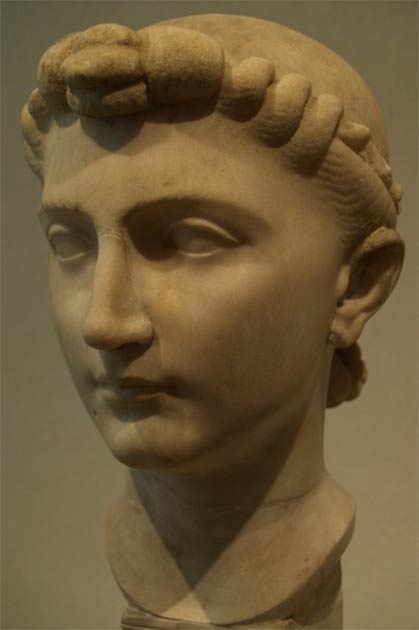
Bust believed to represent Emperor Augustus’ daughter Julia. (Miguel Hermoso Cuesta/ CC BY SA 4.0 )
But just as all other women in ancient Rome, these women were not allowed to play any part in the political offices of the state. Even the Roman emperors directed them to domestic roles within the household.
This was also a period when the freed people were now classed as being freedmen of the emperor, who could be given the opportunity of achieving important posts, which in turn also meant that this new class of free people would have greater wealth and also, by being linked to the emperor, they could exercise considerable influence within the state offices. These changes brought about by the emperor also covered the slaves of the imperial household, which could change their social class.
This period of change in the Roman empire also saw changes to the ways of the senatorial class. They lost certain powers as members of the Senate and also as magistrates, and although their roles continued, they no longer could wield the political power that the members of this class enjoyed and in many ways depended. Now it was the emperor of Rome who had the real power in the state. But both of these ranks continued and their roles were marked and formalized.
During the period of the second century AD Roman women were also seeing change. We can see an example of this change in the use of the word “clarissimae” (renowned) for a most distinguished lady, and of course males held the same title (clarissimi). In some ways this new wording meant that the males and females were members of the senatorial class.
Ancient Roman Class Rules with Legal Backing
By the third century AD the law had created two groups into which society was placed, the first being “honestiores,” the honorable people. This included the senators and the equestrians plus soldiers. The second group was known as “humiliores” or lower classed people in Roman society. The Roman lawmakers made sure that if this lower class broke class rules then legal penalties would be enforced.
There is one other very important feature of how ancient Roman classes were managed – patronage. It was deemed that if one was fortunate enough to be in the upper social class in society, than they had to show their status and rank in public so that the other classes would recognize them. One manner in which they could show this was by wearing their distinctive clothes to make them stand out.
In ancient Rome there were two types of patronage, one was public – where the patron could become the protector of groups such as craftspeople, guilds, etc. This manner of patronage could involve giving very large sums of money for public games, entertainment, public buildings , and dispensing advocacy.
The other way was to offer personal help or aid to a person of a lower class; this could be done by giving gifts or money, help with legal matters, business advice, and general help. It could also mean the patron could offer protection if it were required. This form of patronage was given to both males and females of the freed people.
By giving this help to the lower classes, the patrons would expect that they were given public acclaim by their clients. This could take the manner of groups of the lower classes raising statues with inscriptions to acknowledge the help and advice they received.
The aristocratic families could also display their social class when they had died; this was done by having a public display using a wax portrait taking the shape of a mask. These masks would be displayed inside their homes and could even be taken to funerals as well as public events. Polybius the Greek historian gives us details of those images. Having more of these images would show people that the person had been one of considerable social status during their life.
 From Nero fiddling while Rome burned, to the bloodthirsty conquests of Genghis Khan, the world has been shaped by those who wielded mighty armies, were political masters, and who influenced masses to their wills and not always for good. Rightly or wrongly, these leaders throughout time—who were feared, respected, and sometimes just misunderstood—gained bad reputations and now live in infamy. Discover the lives of the infamous in the Ancient Origins Special, available here .
From Nero fiddling while Rome burned, to the bloodthirsty conquests of Genghis Khan, the world has been shaped by those who wielded mighty armies, were political masters, and who influenced masses to their wills and not always for good. Rightly or wrongly, these leaders throughout time—who were feared, respected, and sometimes just misunderstood—gained bad reputations and now live in infamy. Discover the lives of the infamous in the Ancient Origins Special, available here .
Top Image: ‘The Roman Festivals of the Colosseum’ by Pablo Salinas shows p eople of different Roman social classes. Source: Public Domain
References
Mathisen, Ralph (2019) Ancient Roman Civilization , Oxford University Press.
Related posts:
Views: 0
 RSS Feed
RSS Feed

















 November 7th, 2020
November 7th, 2020  Awake Goy
Awake Goy  Posted in
Posted in  Tags:
Tags: 
















